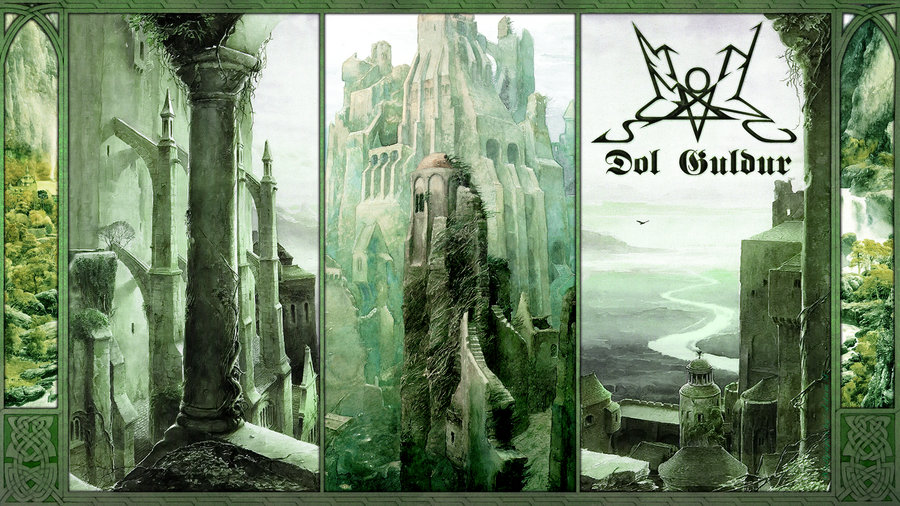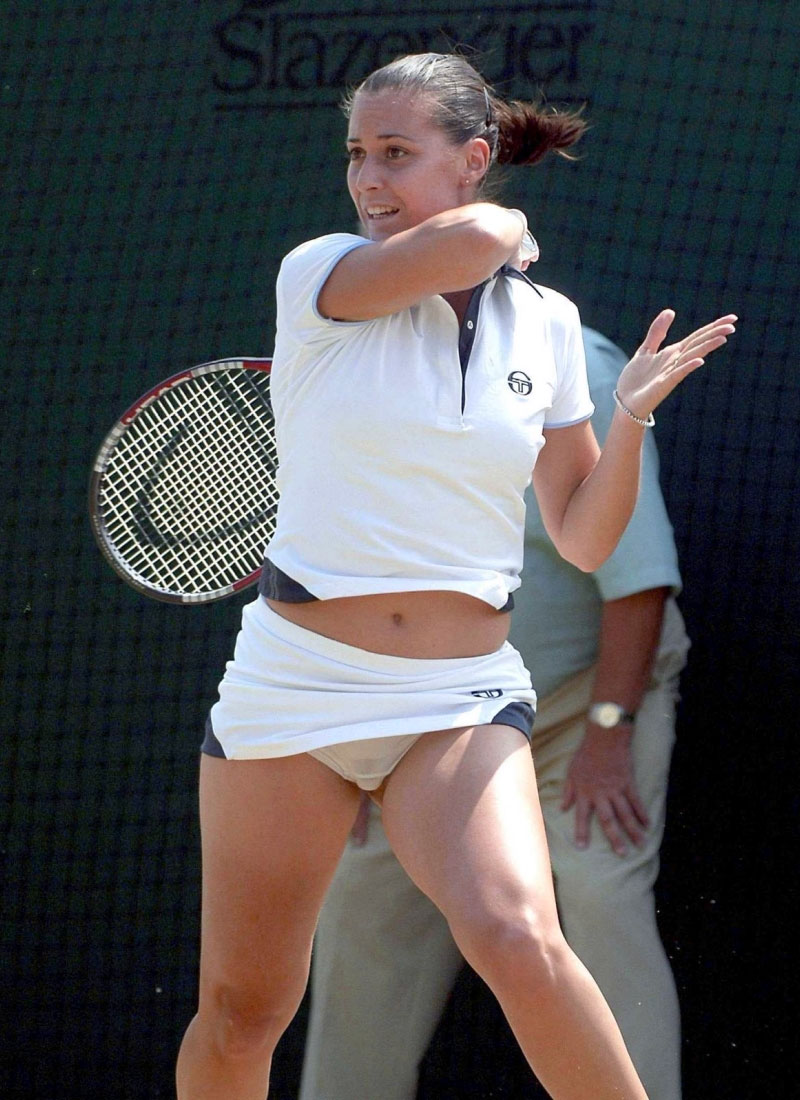With the Christmas release of "The Hobbit: The Battle of the Five Armies", Peter Jackson's telling of the Lord of the Rings saga has come to a close. (Despite all the advanced wizardry of special effects that have come over the past decade -- much of it pioneered by Jackson -- "The Simarillion: The Movie" isn't coming to the big screen anytime soon)
I have to side with Jay Bauman from Half in the Bag on the topic of all three of The Hobbit movies: it was nice to re-enter this universe, but the movies themselves were missing a lot of the LotR magic. The third Hobbit movie, unlike the Third Lord of the Rings movie, didn't drag on too long at the end (female moviegoing accompaniment disagrees with me greatly, more on this later), and unlike the first and second Hobbit movies didn't have huge amounts of unnecessary boring filer to pad the runtime.
What "Battle of the Five Armies" had instead was unnecessary
exciting filler. It was filler nonetheless, but it was at least an improvement. The movie opens up at full throttle, and I must say that the whole assault on Laketown by Smaug was very well done: watching the dragon roast huge swathes of town with every path felt sort of like how the U.S. bombing of Aghanistan must have looked: this super-powerful aerial assailant that those mere mortals on the ground couldn't even touch let alone harm. The exception, of course, is one of the movie series' big positive changes from the novel: Bard the Bowman (Luke Evans).
In the novel, a topic I discussed
on Half in the Bag's discussion page on the first Hobbit movie:
Bard is an important figure in Middle Earth: he’s the chief negotiator for the Arkenstone in the buildup to the Battle of the Five Armies, he restores Dale to its former glory, and is the grandfather of Brand who waylaid the Nazgûl as they hunted for Bilbo and the Shire.
Of course, this all stems from shooting Smaug in the first place: in the books, he really does appear out of nowhere.
The movies do a bit of a better job of fleshing out Bard, so he ends up a character we care about later in the story as he takes leadership of the town. Of course, the movie irrationally decided to drop the potential for interpersonal conflict between Bard and the Master in the third movie: like Christopher Lee's Saruman in Lord of the Rings, he's cheaply killed off at the beginning. (The conflict instead is a bunch of cheap gags involving the cowardice of Ryan Gage's Alfrid -- the Master's sidekick who dresses like a woman and steals gold coins like a cross-dressing Pogo the Monkey). At the beginning, they setup the black arrow subplot from last movie (unlike in the books, "black arrows" here are harpoons that could pierce dragon flesh): after expending his quiver into Smaug's belly, Bard's son brings up a black arrow that Bard uses to fell the dragon through the clever use of his son, some rope, and no advice whatsoever from a thrush to shoot the last black arrow into the single notch in the dragon's belly. What really ruined this scene, oddly enough, was the talking bit by Smaug himself.
The oddness of this, of course, is that in the books Smaug talked. So did
the raven, the thrush, the eagles, and the wolves. Unfortunately, the tone of these movies was following the Lord of the Rings model too closely, and that means that it had to seem more "realistic". The talk between Bilbo and Smaug in the second movie, of course, was absolutely 100% required for the story to progress properly. So the filmmakers came up with what I thought was a decent compromise. Because Bilbo at that point had the One Ring, and it was established in "The Two Towers" (book) that the One Ring gave Sam the ability to understand foreign orc-speak, the filmmakers decided to have Smaug's incomprehensible dragon-talk turn into flawlessly understandable English once Bilbo touched The Ring. This allowed Bilbo to have the dragon debate so beloved in the books, without having to also imbibe the Peter Jackson film universe with speaking birds and beasts. So...uh...why did Smaug talk to Bard as if Bard could understand him? Did Bard understand him? What was the point of this? In the second film, Bilbo's debate with Smaug at least passed on some useful information: Smaug told him what the Arkenstone would to do Thorin (Smaug shouldn't know this, but somebody has to set the drama up for this plot point which in the book was simply tossed in as narration), reminded us that Bilbo had the Ring of Power and that it was special and that Smaug could totally join with Sauron who Bilbo has never heard of to attack Gondor which Bilbo also has never heard of, and also finally give us some hints to Smaug as a character. Here Smaug just mutters some generic threatening BS, charges at Bard, and dies by falling on the Master's head.
Enjoy it though, kids: this was the high point of the film.
It's not to say the film steadily dropped in quality at this point, but it was almost certainly the highlight. From here, Legolas and chicky-elf go to
Gundabad to see if Orcs are there. This ends up being key to the plot later, so much so that you realize you have
no reason whatsoever for Legolas to think there was any profit in going that direction. None whatsoever. When they get there, of course, they find that there are leagues of orcs and goblins teeming inside and waiting to come out and march to war.
Film gets to play its role as a visual medium here, as Thorin has to grasp the "dragon sickness" in a neat visual nightmarish style that does a pretty good job of explaining to idiots that he really really really craves gold. I think it works. We also remind the audience that Bilbo totally swiped the Arkenstone, after Smaug warned him in the last movie it would destroy Thorin. It may occur to you that this visual expression of Thorin's gold-lust negates the need to have Smaug talk about this to Bilbo in the first place. Regardless, Thorin is (temporarily) cured of this and able to start fortifying his stronghold (which has an interior size far smaller than in the books).
Now...comes...whoa boy...
When Peter Jackson first started talking about turning "The Hobbit" into a movie, he
brought up this event.One of the problems with The Hobbit is that it is a fairly simple kids story, and doesn't really feel like The Lord of the Rings. Tonally I mean. It's always may be a little worried, but with two films that kinda gets easier. It allows for more complexity. At that implied stuff with Gandalf and the White Council and the return of Sauron could be fully explored.
That's what we talked about this morning. Taking The Hobbit and combining it with all that intrigue about Sauron's rise, and the problems that has for Gandalf. It could be cool. That way, it starts feeling more like The Lord of the Rings and less like this kids book.
Jackson repeated this
when work began on The Hobbit: he was going to be able to do the whole story. You see, in the novel, Gandalf leaves Thorin's Party at the borders of Mirkwood and doesn't return until Bilbo is giving Thranduil the Arkenstone. After the Battle of the Five Armies (oh, sorry, spoiler alert: the movie called
The Battle of the Five Armies ends with a fight involving...well, about 9 armies in this version, we'll get to that), Bilbo learns where Gandalf went: to Dol Guldur to make war against Sauron ("The Necromancer") with the assistance of the White Council. That's what Peter Jackson decided he could show us rather than the Tolkien trick of just telling us (and, again, more on this later). The books (including the LotR appendices) don't go into much more detail. The movies, of course, have their own take on this story that involves Gandalf getting captured, meeting Sauron, etc. etc.
Oddly enough, in The Hobbit (the movie) Sauron has a physical form which he lacked in Lord of the Rings (the movie). The novels, of course, have this backwards, though I grant that the "almost" form of Sauron shown in the movie probably matches the book. If you don't quite understand how those last two sentences work together, read them again.
What we end up seeing is the White Council (Gandalf, Galadriel, Saruman, and Elrond, Radaghast) coming in to fight Sauron...and the Nazgûl...all on their own. Now I don't doubt that these are a pretty badass group to be fighting Sauron (and, curiously, this contest pits all three Elven rings
† against The Nine (plus what Sauron "possessed" of The Seven), but no footsoldiers? At all? We could have avoided a lot of the silliness of Gandalf vs the orcs from the last movie if a few Morgul orcs versus a few elven warriors (and perhaps, and I can't believe I'm saying this, Arwen) could have been involved, make this look more like a major strike force on the part of the White Council. For one, a council member (and an elf warrior I just wished we could see) Glorfindel didn't make an appearance, he could have even been thrown in as an Elven sargeant character and unnamed in the movie but indentified in the credits (for the second film series in a row, Jackson has a female elf taking potential Glorfindel screen time). Likewise Cirdan, a valued member of the White Council and possible Ringbearer (see the
† footnote below) is gyped out of his big appearance. Instead of this epic battle -- which is also supposed to feature super-powered magic weapons engineered by Saurman -- we get Saurman playing video game battles against the Nazgûl (who were almost certainly at the battle, though I'm not sure all Nine should have been in attendence: Minas Morgul for one would not have been left wholly abandoned by Ringwraiths with Gondor keeping a watchful eye under the reign of Turgon). The battle ends with Elrond and Saruman kicking Nazgûl ass, Gandalf being rescued by the rabbit wagon, and Galadriel turning into a CGI version of Slimer from Ghostbusters.
† We're supposing for the purposes of this that Gandalf has already received Narya from Cirdan. We're told it occurred in the Third Age, but no further information is given beyond that. I always assumed that Cirdan gave the ring to Gandalf when the Ishtari arrived at the Grey Havens.
This was all entertaining as far as it goes, but parts of it were rather silly, several aspects ridiculously out of character, and the resolution came too quick and was rather cheap. Again, this could serve to be a good battle sequence to whet the audience appetite for the big Five Army finale. "Leave Sauron to me" bellows Saruman at the end, making us want to assume that he was busy in league with Sauron already. He wasn't: he hadn't yet handled the
palentir and grappled with Sauron at this point. He was interested in The Ring, not its Master. Again, with a real orc vs. elves battle and the White Council fighting somewhere between five and eight Nazgûl (I remain convinced that Khamûl the Easterling would have been still at Minas Morgul, and having two other Ringwraiths remain there with him would fit, seeing how that's the way Sauron retook Dol Guldur years after this movie took place), culminating in Saurman's special weapons neutralizing the Nazgûl and driving back Sauron, we would have been treated to something really special. Alas, we had this video game stuff, and relying on Galadriel defeating Sauron with the power of the Ring Nenya, which she absolutely would not have done. It wouldn't be for the first time, but this is a scene where it lays bare that the changes made between book and movie were almost all for the worst.
Thranduil makes a surprise visit to Dale, and not for the first time I admire the antlers on his elk. It's a nice touch, makes him easy to spot in the battle scenes, and even fits with his character. What movie am I watching now? He brings aid, but it comes with a price: he wants Bard's help in assailing the Dwarves. There's a Bard-vs-Master scene that wants to be written and isn't possible since we've killed the master off. Alfrid steals and cheats some more. Haw haw. Bard tries to reason with Thorin and is rejected.
The dwarves are reassured that more dwarves are on the way to lend a hand, which doesn't make any sense if a thrush couldn't summon Roäc the Raven to pass Thorin's message off to Dain in the Iron Hills. Just knowing that a black bird flew away was apparently enough to convince them Dain was coming. So they held out, with the Elves and men unaware of their master plan. The Orcs too have a master-plan, though. Azog tells his lieutenant Bolg that they have forgotten the "earth eaters". I apparently had too, as my brain mentally stormed through
Unfinished Tales of Numenor trying to think what exactly the orcs had up their sleeve. I do have to admit, a
lazy homage to 2005's King Kong wasn't what I had in mind.
As Thorin and company gear up for war...hey, wait, was anybody else expecting the Arkenstone to be discovered when Thorin had Bilbo strip down to his skivvies to put on the
mithril coat? Come to think of it, how did Bilbo keep Thorin from noticing the Arkenstone during this scene? I can't take my jacket off at McDonalds without the "thunk" of my pocketed cellphone being audible across the room when it lands on the plastic molded seats, yet Bilbo can open up and remove the shirts that earlier we've seen is his Arkenstone hiding place right in front of Thorin without any sign that he's having to cover up. We didn't even see any
tension in the scene to hint that Bilbo was in danger of having Thorin discover he had the Arkenstone. So Bilbo puts on the mailcoat, Thorin says how wonderful he looks...and
then we have a scene filled with tension as Thorin talks about how somebody has stolen the Arkenstone. Seriously. I'm not sure how the script editor missed that one, but seeing what happens later I guess I can empathize. Anyhow, Thorin is convinced that one of the other dwarves has stolen the gem, which I suppose makes sense seeing how they're all greedy
Scotsmen dwarves just like Thorin himself. So anyways, as Thorin and company gear up for war, and Oakenshield turns into Mel Gibson in
Conspiracy Theory, Bilbo realizes that Thorin won't give up the horde of gold without some serious intervention. So he sneaks out to join the Elven company and...for Christ's sake, he doesn't use The Ring? He has The Ring. Later on (more on that later) he
uses The Ring. So why doesn't he use The Ring? I guess they needed to show the graphic of Bilbo climbing down the big blockade in front of the entrance, even though later on he will do the exact same manueuvre in front of a ton of people (and ringless) which means popcorn-munching morons won't be confused how Bilbo climbed down for very long. So Bilbo manages to sneak away from the dwarves, sneak up to the City of Dale, sneak past the human and elven guards, and wander around the city in order to bump into Gandalf...all ringless?
Okay, I'll segue away for a bit here and talk about another of the incomprehensible Peter Jackson changes: Bilbo keeping The Ring
completely secret from everyone. For those who aren't aware, in the book this
doesn't happen. From the moment he frees Thorin and Company from the spiders, Bilbo's magic ring is no secret. He doesn't tell the men or elves about it, but for Thorin and Gandalf
et al he's open about The Ring. He's not entirely open about
how he obtained it, of course, but he doesn't hide it from his friends in the quest. By removing Bilbo's [limited] honesty on the subject, Jackson manages to hit home harder that The Ring is making Bilbo act out-of-character, but at the expense of some believability in the storytelling. Bilbo's heroism needs to be more strongly reflected when you throw him telling people about his cool new toy, and as a result they later give him a silly yet meaningless task, and are forced to put more Bilbo into the final battle than was in the book. Really really bizarre choice here, as is, as I mentioned above, wandering aimlessly through Dale and just happening to see Gandalf.
Unlike in the book, Gandalf is already here doing his wizardly doom and gloom routine, which Thranduil is rejecting for no apparent reason...again, having him here as a well-know Ishtari trying to warn Thranduil and Bard about the impending goblin invasions ruins some of the narrative along with some of the motivations of the characters. Gandalf knows full well that an orcish army is marching on the Lonely Mountain, but surprises everybody with the news as the bloodless seige of Erebor threatens to turn bloody. Of course, since this film goes out of its way to setup this threat (Legolas in Gundabad, endless shorts of Azog and Bolg acting menacing and talking about how the Age of Orcs is upon the world, etc. etc. etc. etc. etc. etc. etc. etc. I'm not kidding, there are a lot of these cutaways and they really got annoying after a while), they can't surprise us with the goblin army anymore. Still, this looming threat causes a lot of the characters to act all weird. If Gandalf knew that Azog and the other orcs were planning an assault on Erebor, couldn't he have brought a few more members of the White Council along with him? In the book, we assume that he heard from The Eagles about Bolg's army (no, this isn't a typo, more later). In this film, he gets Radagast to assemble "birds and beasts" (The Eagles and Beorn), but never bothers to say "hey, you're a wizard, why don't you come along and swing a sword or two? And for that matter, go run after Elrond, he and Glorfindel are probably going to be interested in this."
Once Bilbo arrives, things go a little more book-like: Thanduil gladly accepts the Arkenstone as a way to end the siege (he's
way more warlike here than in the book, even though he at least is given a bit of motivation in the form of white jewels which Smaug apparently stole from him. In the book he's just a bit of an asshole, though oddly not as interested in harming Thorin. In the movie he's a bloodthirsty peacenik. Still, Bilbo rejects the offer of remaining in Dale, vowing to stick by the dwarves he has just stabbed in the back. Stabbed them in the back for their own good, yes, but stabbed them in the back in the worst possible way from a dwarvish perspective. (It is, now that I think about it, a really really cruel stabbing in the back of your friends from the persepctive of 9-year-old me, who wasn't impressed by what Bilbo did to his friends and at the time took Thranduil's side in the conflict). Bilbo returns to the Lonely Mountain and awaits the elven host's arrival the next morning. When Tranduil casually accepts that payment has been made and that maybe Thorin's interested in a ransom exchange, Thorin goes understandably livid, and assaults Bilbo once he cops to the deal. The imposition of Gandalf is done beautifully, and the booming wizard's voice really captured the spirit in the book well. It later infuriated me that so little of the book was captured thusly, but I'll accept the small victory here.
Speaking of small victories, Thranduil and Bard have one here, as just as Thorin is about to accept the tradeoff a raven comes and...now he knows...that Dain and the other dwarves have arrived? Sorry, that made no sense, let's try this again.
Speaking of small victories, Thranduil and Bard just had one as I mentioned, as Thorin is about to accept the offer when...a raven comes...wait, you're telling m e this is all true? Just by seeing the raven, which again
doesn't communicate in the movies Thorin understands that land is near and the Ark can land on Mount Judi. Or that Dain has arrived. Either one makes about as much sense at this point, frankly, and Dain is about to make the Gimli "laddie" talk during the Council of Elrond a decade ago sound like the most non-Scottish talk in human history. At this point, the movie falls into a pit of self-parody that even
Geordi LaForge wouldn't be able to escape. No, seriously, Dain's thick Scottish accent is like somebody did the world's worst Braveheart, Sean Connery, Shrek, Chief Engineer Scott, and Groundskeeper Willie impersonations
simultaneously. Scotsmen
complain about Christopher Lambert's Scottish accent a lot but it cannot possibly compare with this. So Dain from the Iron Hills shows up, and it is an impressive sequence as his dwarves stomp over the mountain and begin to form ranks against the elven host. The stage is set for the biggest elven vs dwarven battle since Nogrod vs Doriath, when Azog brings forth the...big worms that punch a hole in the ground. I tried not to cringe, I really did.
So orcs start pouring out of the holes, and THE BATTLE OF THE FIVE ARMIES has begun: men, dwarves, elves, Orc Team A, and bats. Oh, and wargs. So we're already at six. There's a cool scene where the dwarves hobble-run into their new formation, going past the elves and Thranduil looks like he's going to abandon our heroes. The dwarves entering their stiff and well-defended lines is a great looking special effect, and presents a very challenging line in the sand. Our dwarven heros are about to try to stem the tide while the elves do nothing!? That's what you're supposed to think, and I suppose you're supposed to cheer when all the elves jump over the well-defended dwarves to start hand-to-hand fighting orcs. In reality, you've just witnessed
the worst tactical decision during warfare to occur in any movie ever. The dwarves were well defended and able to spear down the first tide of orcs. By jumping over them, the elves forced the dwarves to abandon their well-placed line and face a much larger force than they would have otherwise. What could the elves have done instead? I'm not sure, maybe they could have come up with a clever way to shoot arrows over the dwarven lines or something? Like...shoot your damned arrows? All the elven warriors are shown with a full quiver of them, and one or two or eight volleys into the orc ranks would have decimated their forces and permitted the dwarves' line to remain intact after the first wave and keeping the casualty count down.
Over in Dale, another wave of orcs has invaded the city, forcing Bard and company to defend their women and children and very quickly get overrun. This is where we get the comic relief of all the Alfrid (remember him?) trying to duck his military duty and keep Bard's family safe as a proxy for actually getting involved in the fighting. We watch the city constantly getting instantly overrun, only to in the next cutaway showing the city
even more overrun, and then
even more more overrun, and then
even more more more overrun, etc. etc. The sheer size of the orcish army assailing both Dale and Erebor, and the fact that inexplicably every 2nd orc is 23 feet high and has machine guns surgically attached to replace his arms means that the orcs are basically impossible to defeat, creating scene after scene where all hope looks lost as the armies are more and more overrun.
When we cut to Thorin being all insular on his throne, wearing the crown of the King Under the Mountain and the dwarven voices echoing through an empty hall, it's almost a relief to the beleagured eardrums. The drama, such as it is, sounds pretty hollow. Maybe it's just being so familiar with the source material (the artificial drama thrown into Lord of the Rings, such as Aragorn falling into a river with his horse, left me cold in much the same fashion) but these scenes didn't resonate with me at all. Again, it was a break from the noisy and repetitive action which was at least something.
Suddenly there was a great shout, and from the Gate came a trumpet call. They had forgotten Thorin! Part of the wall, moved by levers, fell outward with a crash into the pool. Out leapt the King under the Mountain, and his companions followed him. Hood and cloak were gone; they were in shining armour, and red light leapt from their eyes. In the gloom the great dwarf gleamed like gold in a dying fire.
Rocks were buried down from on high by the goblins above; but they held on. leapt down to the falls' foot, and rushed forward to battle. Wolf and rider fell or fled before them. Thorin wielded his axe with mighty strokes, and nothing seemed to harm him.
"To me! To me! Elves and Men! To me! O my kinsfolk!" he cried, and his voice shook like a horn in the valley.
The "they had forgotten about Thorin" moment in the movie was actually quite impressive: Extreme Scottish Dain and his remaining dwarves amassed a wall in front of the gates to the mountain kingdom, readying themselves for one final assault. Suddenly with a great blast of a horn, Thorin dramatically smashed the gate apart (using, apparently, a giant bell which somehow wasn't destroyed in the ridiculous Smaug chase scene in the last movie) and his company charged forth to meet the goblin hordes. The Iron Hills army steps graciously aside to let them pass (I wouldn't be particularly surprised to notice that they had Thorin's dwarves slap hands with Dain's forces as if they were wrestlers hand-slapping fans on their way to the ring), and Thorin's army charges through the orcs and starts ripping shit up: Thorin has a plan though: on the top of a giant hill and platform which apparently was a natural outcrop entirely created so that Azog would have somewhere to stand and direct the battle. Azog is, indeed, there: so Thorin aims to go up and kill him. Azog has other ideas: Bolg goes down to join the fray.
So began a battle that none had expected; and it was called the Battle of Five Armies
With this quote, Tolkien begins the Battle of the Five Armies. From that line to the end of Chapter 17 is 1,859 words. Just a little longer than two pages (single spaced). That's it. That's the Battle of the Five Armies, and about 220 of those words is just Bilbo standing on Ravenhill wearing his magic ring and muttering about all the people he met and how much he doesn't like the war. Oddly enough, for Tolkien this was pretty verbose: the Battle of the Hornburg, which took up about 40-45 minutes of running time during
The Two Towers, took up about 1 2/3rds pages of the book. Hell, the chapter ends with Bilbo
getting knocked out by a rock and missing the entire end of the battle. For Tolkien, especially in a children's book written in the trenches of the First World War, the fight scenes were a means to an end, not an end unto themselves.
How can I best describe the fight? Female accompaniment didn't like the fight scenes at all: she thought watching ugly monsters fight ugly dwarves (except "
the one that was pretty hot, and Thorin") in a noisy and repetitive battle wasn't worth the price of admission that she didn't pay. I wasn't much more impressed: since Bolg wasn't available to fight
Thorin Beorn (since that was Azog's role, and Thorin couldn't beat them both up and keep the super-orcs credible, a decision Jackson forced on himself by making them super-orcs to begin with), instead he ended up fighting...Legolas.
Why was Bolg fighting Legolas?
Why did Legolas have to be in this movie?
Why did Azog have to be in this movie?
Wouldn't this time-chewing sequence be unnecessary if these two superfluous characters had been eliminated?
Oh Christ, are they going back to the silly love triangle plot?
Legolas is kicking ass and taking names, fighting off super-trolls and super-orcs and super-duper-trolls and...hey isn't this all happening in daylight? Why does Peter Jackson keep showing us trolls during the day? Trolls are supposed to turn to stone during the day...it literally was a plot element just two films ago. Once that scene was in there, Jackson should have kept the troll juggernauts to a minimum (and/or underground) and looked back at giant trolls pushing the Black Gate open in the last trilogy with a deep and timeless embarrassment.

Instead we see Legolas taking on super-duper-trolls until...he runs out of arrows. And the love of his life,
Gimli chicky-elf, is endangered by Bolg. Then he fights Bolg,
painfully long and uninteresting sequences featuring such unrealistic elements as the constant falling through a tree bridge (or was it an ice bridge? maybe it was an icy tree), the existence of said perfectly-shaped bridge to begin with, and constant sword battles where both opponents always seemed to get their blade up just in the nick of time. It went on and on and on, and while the choreographer (and the CGI storyboarders) seemed to have a lot of success using the environment to make the fight a little more interesting, there just wasn't enough there. It was the infamous "Riker fights a monster" moment.
Thorin and his Azog fight didn't fare much better. There was some added "tension" (read: filler) caused when Thorin and some of the dwarves searched the upper plateau for Azog and Bolg, while Fili and Kili eventually were attacked and both killed by the orcs in a fairly decently well-shot scene where they temporarily thought this was a horror movie. This "closed off" the love triangle, finally, thankfully. To warn Thorin and company about the Gundabad wave of goblins approaching from the north (hey, remember when Legolas went to Gundabad and found the goblin army?), Gandalf sends Bilbo as a messenger
even though the ravens were literally just seen less than a minute earlier. This, of course, gives Bilbo something to do, and something to do related to his magic ring. Since the centrepiece of the drama here is the battle rather than the conflict between Thranduil/Thorin/Bilbo over the Arkenstone, the book resolution (Bilbo puts on his ring, stands away from the fighting, gets knocked out with a rock and misses all the action) won't do, so now Bilbo has to come and warn Thorin about the goblins. Unfortunately, by the time Bilbo gets there the goblins have already shown up to start pestering Thorin, so all Bilbo is able to pass along is that the army is bigger than just a hundred scouts. Of course, if the army only was a hundred scouts it would just be "a hundred troops" since scouts always imply a larger attack force behind. Anyways, Bilbo warns him, sort of hiding his invisibility ring but not really. Thorin is warned, the big Thorin-Azog fight begins, Bilbo disappears (in a story fashion, not in a magic ring fashion) and Thorin takes on the dwarf who killed his grandfather in Moria. Now on the Thorin-Azog battle they did do a lot of interesting stuff, falling off mountains, somehow climbing up to a frozen lake on the top of the mountain next to the Lonely Mountain...no, there isn't supposed to be any other mountains, that's why the Lonely Mountain is so lonely...where Azog and Thorin fight until they end up in a battle aboard an ice flow. In the end, Thorin defeats Azog by just stepping off the ice and letting him fall into the frozen water, drug down by the giant piece of rock on a chain he had affixed to himself.
Just when you think this Five Army battle is over, Azog floats by under the water (apparently, no longer drug down), and then after a painful series of "eye closeups" cuts, the eyes finally open as we knew they would, and he somehow figures out how to stab Thorin in the foot from under the ice. Then burst out of the ice, and then they fight again on ice that is now strong enough to support their hulking bodies smashing into each other. Finally, Thorin stabs Azog with his sword so deep that the sword pierces Azog all the way to the ice; try not to think too much about that fact, since the sword that Thorin chose in the troll cave would have been for his height, and unlikely to go all the way through Azog who is depicted as being roughly 1.6 Andre The Giants tall.
There were lots of clothes, too, hanging on the walls-too small for trolls, I am afraid they belonged to victims-and among them were several swords of various makes, shapes, and sizes. Two caught their eyes particularly, because of their beautiful scabbards and jeweled hilts. Gandalf and Thorin each took one of these; and Bilbo took a knife in a leather sheath.
Whatever, at this point we just want to go home. First, though,
THE EAGLES ARE COMING!
Bilbo's "cry" in the movie is more of a moderate whisper, though the eardrums of most moviegoers at this point probably weren't capable of handling another barrage. The Eagles come down, Beorn comes in, and the goblins are finally swept away. Thorin and Bilbo meet for one last time, most of the great dialogue from the book is cast aside, and Thorin son of Thráin son of Thrór is laid to rest with the Arkenstone on his breast and the sword Orcrist on his tomb. Haha, just kidding, he lays in the open on a slab of rock that was inexplicably ice when he first laid down on it, they have some lines of dialog, and apparently he's left there for the bats to feed off of. Bilbo immediately starts to set back while the remaining dwarves wave from the door to the Lonely Mountain. Gandalf never mentions Sauron, they never mention the ring, Bilbo goes back to the Shire. Meanwhile, Legolas runs off with chicky-elf after she's forever banished from the forest realm by Thranduil.
Twenty-six years later, their love is sadly ended when she accidentally dies of poisoning, having eaten some berries that were shit on by Radaghat's rabbits. Legolas swears he'll
never love another woman again...
The scene where Bilbo returns to Bag End to find the Sackville-Baggins and others are buying his estate at auction works fairly well, but its rushed through with such impatience that the audience barely gets to register what's going on. Based on the number of book words about the Battle of the Five Armies versus the time on celluloid, Bilbo's auction should have been at least 35 minutes of movie right there. Imagine the long epic battles over spoons he and Lobelia could have! They could fight underneath a spinning windmill, or perhaps duel it out on a jetboat speeding down the Brandywine! Why not? At this point, what's the difference?
I think you can get the sense that I didn't like this movie, which is partly true. The series as a whole has really ticked me off, frankly. There were a lot of stupid changes made in the
Lord of the Rings trilogy, and I didn't like many of them either, but at least they mostly worked to keep the story narrative working. I can at least
understand why Glorfindel's job went to Arwen in
The Fellowship of the Ring: for the exact same reason the HMS Invicible wasn't in the film version of
The Hunt for Red October. I can't understand why chicky-elf was even in this movie: there was nothing crying out for a love triangle plot except that there was none of the romance or even strong bonds of friendship in this that imbibed
The Lord of the Rings (be it Gimli-Legolas, Frodo-Sam, Pippin-Merry, or Aragorn-Arwen). We got that Balin felt bad that Thorin was going crazy. That was about it, so the love triangle had to be included. As was noted earlier, with Azog still alive they needed something for Bolg to do, which required an expanded role for Legolas, and a motivation for him in the form of the chicky-elf.
There were just a lot of these decisions that didn't make sense, even before you threw in silly stuff like Radaghast's rabbits. I would have actually perferred they cut the stone giants out: if you think that Tom Bombadil was a wasted little foray in LotR what else could a 30 second shot of stone giants throwing rocks be? They were never involved in any other part of the story, they could safely be cut out. The battle didn't need to be nearly as long, just like the barrel sequence in the last movie didn't need to be nearly as long. Some of the more "epic" stuff was just more time consuming than epic, like Jackson had an eye on his watch with every scene going "we have three movies to fill, people, just keep acting while we film this crap!"
Epic was something that Jackson was obviously going for here, and it failed quite miserably. The Hobbit had a massive tone issue: it wanted to be the LotR sequel that it really wasn't. It was a fun and light story in the same universe as the LotR takes place in. There are darker parts for sure (this fun and light story features a battle that killed thousands, for example), but in the book even the scary moments were punctuated with humour or at least a relief of the tension:
He could hear the goblins beginning a horrible song:Fifteen birds in five firtrees,
their feathers were fanned in a fiery breeze!
But, funny little birds, they had no wings!
O what shall we do with the funny little things?
Roast 'em alive, or stew them in a pot;
fry them, boil them and eat them hot?
Then they stopped and shouted out: "Fly away little birds! Fly away if you can! Come down little birds, or you will get roasted in your nests! Sing, sing little birds! Why don't you sing?"
"Go away! little boys!" shouted Gandalf in answer. "It isn't bird-nesting time. Also naughty little boys that play with fire get punished." He said it to make them angry, and to show them he was not frightened of them-though of course he was, wizard though he was. But they took no notice, and they went on singing.
Singing was mostly left out of all the Peter Jackson movies, sadly, but the songs did more than just set up the universe, they set the
tone. The Hobbit wasn't afraid to be a little more casual, so why the movie couldn't have followed suit I'll never understand. There can be some violence in it of course, kids movies have had violence since the beginning: but it doesn't have to be so adult-oriented darkness. It just didn't fit.
The Hobbit trilogy was stretched out beyond the ability of the source material to fill. Unfortunately, the modernist claptrap that Jackson and his
vagina-equipped writing partners tend to gravitate towards is a pale imitation of Prof Tolkien's writings, inadequate for the larger story and often openly hostile to the worldview that came up with this universe of dwarves and hobbits and wizards and goblins. With three movies to fill, a desire to make the movie "epic" while not having much epic happening (at the end Gandalf admonishes Bilbo: "You are a very fine person, Mr. Baggins, and I am very fond of you; but you are only quite a little fellow in a wide world after all!"), a story about a group of friends who band together to try and defeat a dragon and in the end help establish a kingdom. The pure joys and thrills of the books don't get well reproduced with a few small exceptions (the plate scene in Bag End, for example). By eschewing the comic relief played by Bombur and Dwalin and indeed Gandalf, Jackson instead tried giving us Alfrid in drag (and the very non-Tolkien line by Bard: "your bodice is showing"). Instead of witnessing Bilbo's heroism against the spiders, it's a quick couple of scenes so we can get to an annoying elf-dwarf romance subplot. We got to see Gandalf and Radaghast traveling around "the Witch King's tomb" in the second movie, and a fun but ultimately boring and highly unrealistic barrel chase when instead we could have been treated to Bilbo nervously dealing with a thrush. The chance for real dragon riddles was thrown away, the chance to feel the thrill and the fear of the orcs and the wargs under burning trees was vanished, all of this stuff stripped away...and then nonsense thrown in its place. "Were-worms" and super-mega-orcs straight out of a video game.
Come to think of it, that's another problem: the physics in this world were straight video game garbage: from the Thorin vs Azog fight to the Legolas vs. Bolg fight, from the White Council vs. the Necromancer and from the barrel chase to the dragon chase to the spider fight. Again, as Harry Plinkett has told us, we can't relate to this unrealistic world and we just stop caring. And that's a shame.
I said earlier that Tolkien was content to tell us what happened. Jackson had to show us things, this is a movie of course: but in the end, Bilbo being told about Beorn and the Eagles is just as thrilling as what we saw on screen. In the end, all of this CGI and loud bangs and "thrilling action" and 3D and 48 frames per second just can't compare with this:
In a hole in the ground there lived a hobbit. Not a nasty, dirty, wet hole, filled with the ends of worms and an oozy smell, nor yet a dry, bare, sandy hole with nothing in it to sit down on or to eat: it was a hobbit-hole, and that means comfort.


















